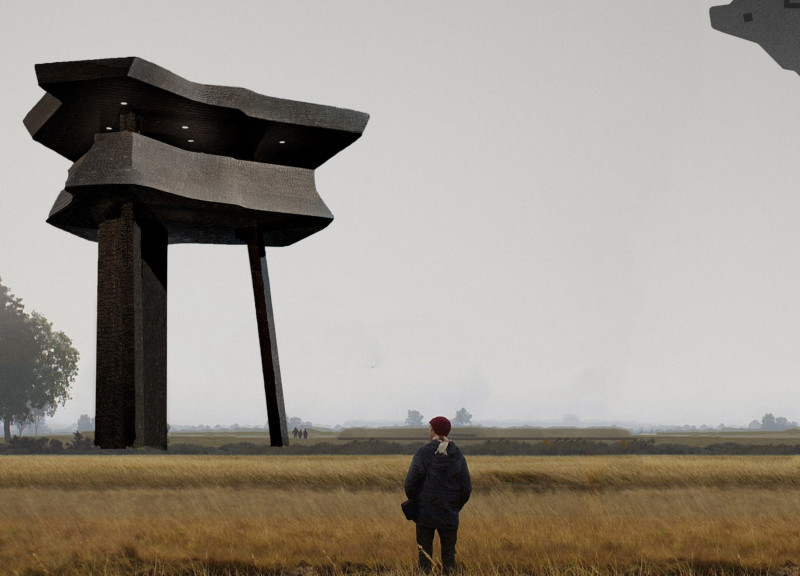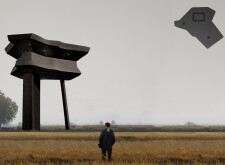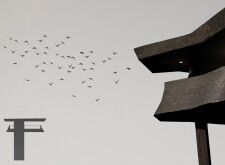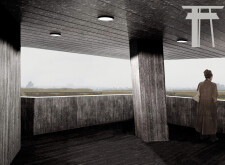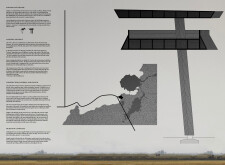5 key facts about this project
### Project Overview
The observation tower is situated in a natural landscape characterized by expansive grass fields and distant tree lines. Its design aims to establish a relationship between architecture and the environment, blending functional and aesthetic elements. The structure is conceptualized as a vertical landmark that pays homage to traditional forms while utilizing modern materials and construction techniques.
### Structural and Spatial Design
The observation tower's design features a distinctive silhouette with fluid, organic lines that play with perspectives, ensuring dynamic visual experiences from multiple angles. Elevated on stilts, the observation deck allows for expansive views of the surrounding landscape, fostering an abstracted familiarity that positions the tower as a recognizable element within its setting. Internally, the arrangement encourages social interaction, with open spaces and terraces that provide visual connections, enhancing the immersive experience for visitors.
### Material Selection
A thoughtful selection of materials plays a key role in achieving the project's visual and functional objectives. Reinforced concrete provides structural integrity, while weathered steel integrates harmoniously with the environment, imparting a rustic quality. The use of regional wood species for facing and interior elements adds warmth, further enhancing the structure's connection to its surroundings. Additionally, extensive glass features invite natural light and offer unobstructed views, enriching the visitor experience while maintaining a contemporary aesthetic.


